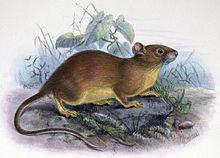
The Muroidea are a large superfamily of rodents, including mice, rats, voles, hamsters, lemmings, gerbils, and many other relatives. Although the Muroidea originated in Eurasia, they occupy a vast variety of habitats on every continent except Antarctica. Some authorities have placed all members of this group into a single family, Muridae, due to difficulties in determining how the subfamilies are related to one another. Many of the families within the Muroidea superfamily have more variations between the families than between the different clades. A possible explanation for the variations in rodents is because of the location of these rodents; these changes could have been due to radiation or the overall environment they migrated to or originated in. The following taxonomy is based on recent well-supported molecular phylogenies.

The Old World rats and mice, part of the subfamily Murinae in the family Muridae, comprise at least 519 species. Members of this subfamily are called murines. In terms of species richness, this subfamily is larger than all mammal families except the Cricetidae and Muridae, and is larger than all mammal orders except the bats and the remainder of the rodents.
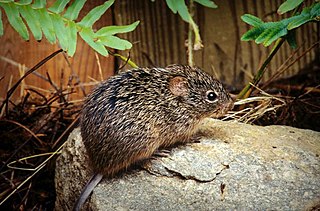
The rodent subfamily Sigmodontinae includes New World rats and mice, with at least 376 species. Many authorities include the Neotominae and Tylomyinae as part of a larger definition of Sigmodontinae. When those genera are included, the species count numbers at least 508. Their distribution includes much of the New World, but the genera are predominantly South American, such as brucies. They invaded South America from Central America as part of the Great American Interchange near the end of the Miocene, about 5 million years ago. Sigmodontines proceeded to diversify explosively in the formerly isolated continent. They inhabit many of the same ecological niches that the Murinae occupy in the Old World.
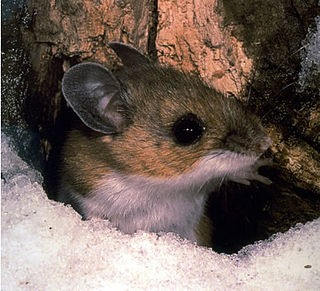
The Neotominae are a subfamily of the family Cricetidae. They consist of four tribes, 16 genera, and many species of New World rats and mice, predominantly found in North America. Among them are the well-known deer mice, white-footed mice, packrats, and grasshopper mice.

A cotton rat is any member of the rodent genus Sigmodon. Their name derives from their damaging effects on cotton as well as other plantation crops, such as sugarcane, corn, peanut and rice. Cotton rats have small ears and dark coats, and are found in North and South America. Members of this genus are distributed in the Southwestern United States, Mexico, Central America, and South American countries of: Venezuela, Ecuador, Colombia, Peru, Brazil, Guyana, and Suriname. Many of the species are found in Mexico.

Bandicota is a genus of rodents from Asia known as the bandicoot rats. Their common name and genus name are derived from the Telugu language word pandikokku (పందికొక్కు). DNA studies have found the group to be a monophyletic clade sister to the radiation of Molucca and Australian Rattus species as part of the paraphyletic Rattussensu lato.

Batomys is a genus of rodent endemic to the Philippines. It has six extant described species.
The white-eared giant rats, genus Hyomys, are a group of Old World rats from New Guinea.
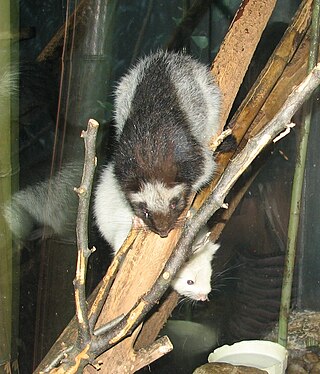
The cloud rats or cloudrunners are a tribe (Phloeomyini) of arboreal and nocturnal herbivorous rodents endemic to the cloud forests of the Philippines. They belong to the family Muridae and include five genera: Batomys, Carpomys, Crateromys, Musseromys, and Phloeomys. They range in size from as large as 50 cm (20 in) to as small as 74 mm (2.9 in). Cloud rats are threatened by habitat loss and illegal hunting. Several species are endangered or critically endangered.

Maxomys is a genus of rodents, widespread in Southeast Asia. They are mid-sized rodents, similar to rats, that live on the ground of tropical rainforests. There they build nests, padded with fallen leaves from trees. They feed on roots, fallen fruit, and other plants, as well as insects. All species are shy and avoid food from humans.

Uromys is a genus of rodents found in Melanesia and Australia. They are known as the giant naked-tailed rats. There are eleven species in the genus, with the most recent described in 2017.
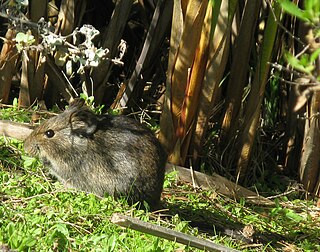
African vlei rats (Otomys), also known as groove-toothed rats, live in many areas of sub-Saharan Africa. Most species live in marshlands, grasslands, and similar habitats and feed on the vegetation of such areas, occasionally supplementing it with roots and seeds. The name "vlei" refers to the South African term for intermittent, seasonal, or perennial bodies of standing water.

The small white-toothed rat is a species of rodent in the family Muridae. It is found in Cambodia, Laos, Myanmar, Thailand, and Vietnam.

Bower's white-toothed rat is a species of rodent in the family Muridae native to southeast Asia.

Kenneth's white-toothed rat is a species of rodent in the family Muridae. It is found in China, India, Myanmar, and Vietnam.
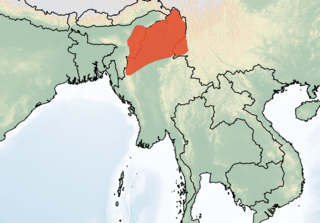
The Manipur white-toothed rat is a species of rodent in the family Muridae.
The Ethiopian vlei rat is a species of vlei rat in the rodent family Muridae. It is found only in Ethiopia and is considered endemic.

Hydromyini is a very large, diverse tribe of muroid rodents in the subfamily Murinae. They are the dominant native rodents in Australasia and one of only two native rodent groups there, the other being the R. fuscipes group of the genus Rattus in the tribe Rattini. They are also found in parts of Southeast Asia.

Rattini is a very large, diverse tribe of muroid rodents in the subfamily Murinae. They are found throughout Asia and Australasia, with a few species ranging into Europe and northern Africa. The most well-known members of this group are the true rats, several species of which have been introduced worldwide.
